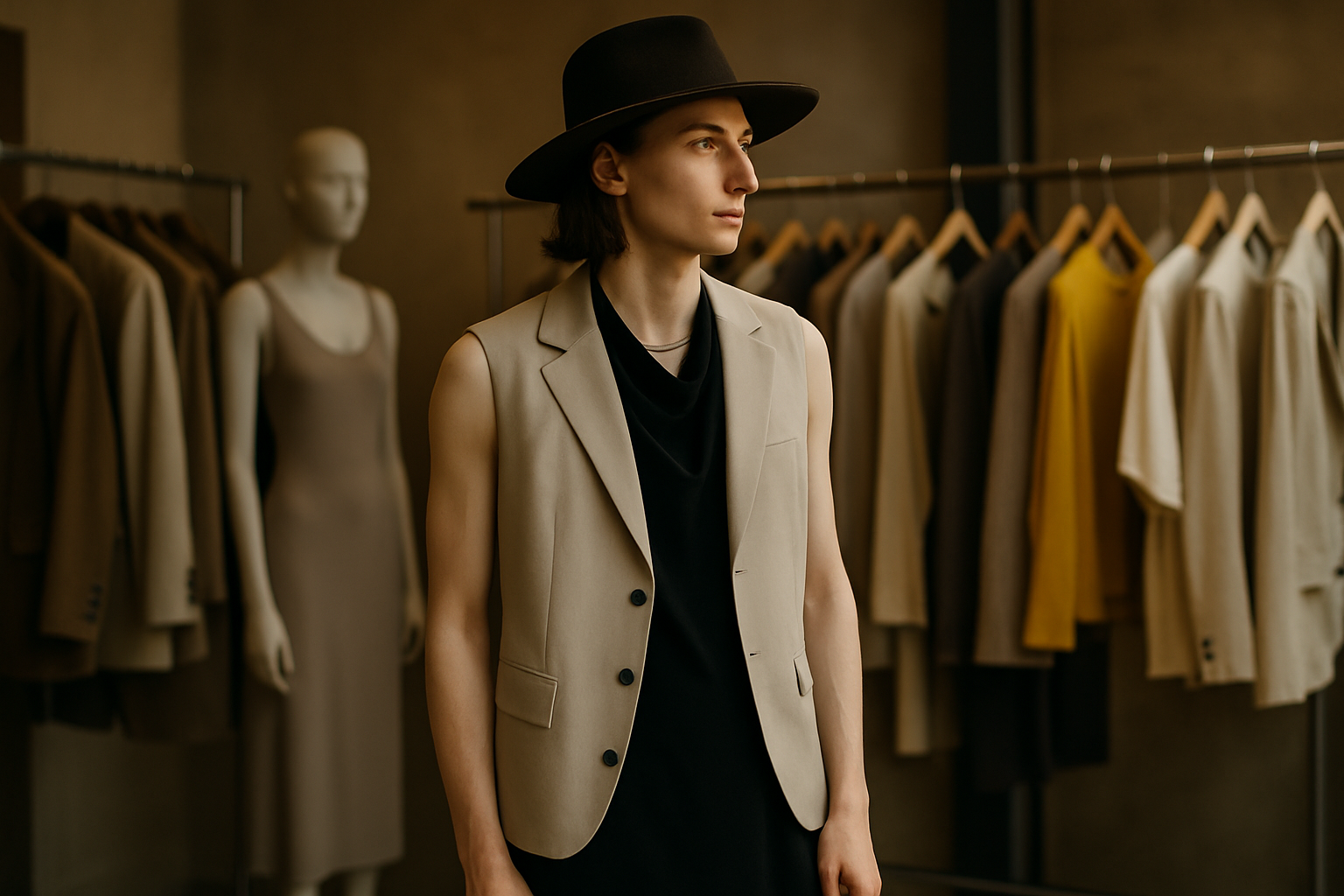Fashion's Fluid Identity: The Genderless Revolution Reshaping Our Closets
In a world where self-expression reigns supreme, traditional fashion boundaries are dissolving at an unprecedented rate. Genderless fashion isn't merely a passing trend but a profound cultural shift transforming how designers create, retailers merchandise, and consumers shop. This movement extends beyond simply women borrowing from menswear or the occasional unisex collection. Today's genderless fashion represents a comprehensive reimagining of clothing as a spectrum rather than a binary, challenging our fundamental understanding of personal style. As societal attitudes toward gender continue to evolve, the fashion industry finds itself at a fascinating inflection point, navigating between commercial opportunity and authentic representation of fluid identities through fabric, silhouette, and design philosophy.

The Cultural Foundations of Genderless Style
Gender-specific clothing is surprisingly recent in human history. Until the early 20th century, children of all genders wore dresses until approximately age seven. Pink was originally considered a masculine color, while blue was deemed delicate and feminine. The rigid gender coding we now take for granted in fashion emerged largely through mid-century marketing rather than any inherent gender qualities in the garments themselves. Figures like Marlene Dietrich and David Bowie challenged these arbitrary distinctions throughout the decades, incorporating traditionally masculine or feminine elements into their iconic looks. These early pioneers laid groundwork for contemporary designers who view gender fluidity not as revolutionary but as a return to fashion’s natural state—one where personal expression transcends arbitrary categorization.
Beyond Androgyny: The New Language of Genderless Design
Today’s genderless fashion differs significantly from earlier androgynous styles. While androgyny often meant women adopting traditionally masculine silhouettes or men embracing feminine touches, contemporary genderless design creates altogether new silhouettes that exist outside binary categorization. Designers like Raf Simons, Telfar Clemens, and Harris Reed have pioneered garments that resist traditional classifications through innovative pattern-cutting techniques, proportion play, and reconceptualized silhouettes. These garments don’t simply blur gender lines—they render such distinctions irrelevant. Technical innovations like custom-developed fabrics with unique draping properties allow single garments to adapt to different body types without reinforcing gender stereotypes. This approach represents a fundamental shift from designing “for men” or “for women” to designing for bodies with infinite variation.
Retail Disruption: How Stores Are Adapting
The retail landscape is undergoing seismic shifts to accommodate this genderless revolution. Major department stores have begun dismantling traditional men’s and women’s departments in favor of concept spaces organized by style, designer, or occasion. Online retailers now frequently offer unified size guides and gender-neutral navigation options. Pop-up experiences dedicated to genderless fashion have appeared in metropolitan centers, creating immersive environments where customers shop according to personal preference rather than gender identity. Progressive retailers have implemented staff training programs focused on gender-inclusive language and service approaches. These changes reflect both philosophical evolution and commercial acumen—research indicates Gen Z and Millennial shoppers increasingly reject gender-based shopping restrictions, with 56% reporting they shop across traditional gender departments regardless of how they identify.
The Business Case for Gender Inclusivity
Beyond cultural relevance, genderless fashion presents compelling business opportunities. Manufacturers can streamline production by creating versatile pieces that appeal across demographics, potentially reducing waste and increasing efficiency. Marketing campaigns focused on individual expression rather than gender conformity often resonate with broader audiences, extending brand reach. The data supports this approach: brands with expanded size ranges and gender-inclusive options have seen average basket sizes increase by 17% according to recent industry analyses. This approach also reduces excess inventory problems that plague traditional gendered collections. Forward-thinking investors have taken notice, with venture capital increasingly flowing toward fashion startups with gender-inclusive business models. The fashion economy increasingly rewards brands that authentically embrace these values rather than merely co-opting inclusive language.
Crafting Personal Style in a Genderless Era
The rise of genderless fashion empowers individuals to curate wardrobes based on genuine preference rather than prescribed norms. This shift requires developing a new fashion vocabulary—one focused on silhouette, proportion, texture, and personal comfort rather than gendered categories. Many fashion-forward consumers now approach styling as a form of personal curation, mixing traditionally masculine and feminine elements with gender-neutral pieces to create distinctive expressions that transcend conventional categorization. Color palettes have similarly evolved beyond traditional gender associations, with neutrals, jewel tones, and even traditionally gendered colors like pink being reclaimed across the spectrum. Accessories play a crucial role in this new paradigm, with items like structured bags, substantial jewelry, and reimagined footwear becoming important vehicles for personal expression regardless of gender identity.
Essential Navigation Tips for Gender-Fluid Fashion
-
Prioritize fit over department labels—many brands size differently across gendered lines even when the styles are similar
-
Experiment with proportion as your guiding principle rather than gender codes—oversized tops with slim bottoms or vice versa create balance regardless of gender
-
Consider alterations as a standard part of building your wardrobe—modest tailoring can transform traditionally gendered pieces into personal statements
-
Look for brands with specific gender-inclusive sizing guides that account for different body proportions
-
Accessorize strategically to shift the gender reading of basic pieces—jewelry, bags, and footwear can transform the same garment in countless ways
-
Focus on fabrication—materials like heavyweight linens, structured cotton, and medium-weight wools typically work well across body types
-
Start with outerwear and knitwear, categories that traditionally have the most crossover potential
The genderless fashion movement represents not just a style evolution but a fundamental reassessment of how we express identity through clothing. As designers continue developing innovative approaches to inclusive design and retailers reconfigure spaces to welcome all shoppers, consumers gain unprecedented freedom to dress authentically. This shift promises more sustainable consumption patterns, greater self-expression, and fashion experiences that celebrate individuality rather than conformity. The most exciting aspect of this movement isn’t just its present manifestation but its future potential—a world where fashion truly serves personal expression without arbitrary limitations.





